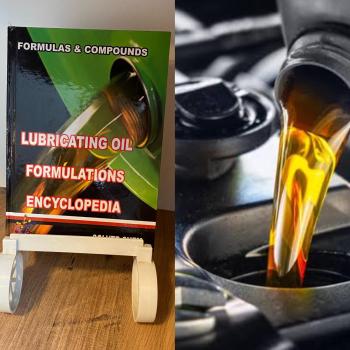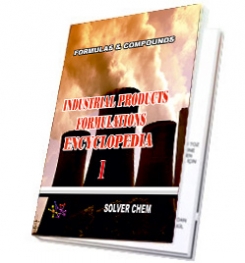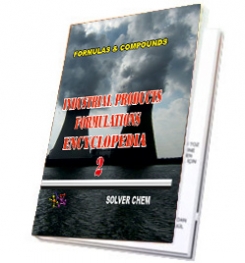
The purpose of a lubricant is to reduce the amount of friction between two surfaces. In some cases, the base oil in the oil or grease may not have enough lubricity to perform this function sufficiently. The component metallurgy may also require special chemistry. For example, with worm gears, traditional extreme-pressure or anti-wear additives often are too chemically aggressive for the softer yellow metals. In this situation, friction modifiers are added to increase the oil’s lubricity.
Conversely, in an automatic transmission, one fluid is used to provide lubrication, hydraulic power transfer and many other functions. The clutches and friction bands within the transmission need friction to function properly. In this instance, friction modifiers are required to smooth the transition from one speed to another. Otherwise, the clutches and bands would “chatter,” causing damage and an irritating condition for the driver.

A number of compounds are used to modify a lubricant’s coefficient of friction. These are known collectively as friction modifiers. They are designed to change the amount of energy needed to cause two surfaces to move past one another. The different types of friction modifiers are shown in the table above.
The purpose of a friction modifier varies based on the application. In a combustion engine, the goal is to lower the amount of friction, thereby gaining fuel economy. In clutches, automatic transmissions and industrial applications, the aim is not simply to control friction in order to maximize efficiency but to reduce slippage. To a degree, this seems a bit counterintuitive, since a lubricant’s objective is to reduce friction and wear. However, there are many situations in which a certain amount of traction friction is required for equipment to operate properly. The friction modifiers used in these applications are not intended to increase or decrease friction but to act differently under specific shear conditions. This essentially smooths the transition from a dynamic condition to a static condition, such as during a gear change in a transmission or the engagement of a clutch.
The Progression of Friction Modifiers
Friction modifiers in engine oils can be traced back to 1915. They were used first in differentials, wet-clutch applications and transmissions. Their use escalated considerably in the late 1970s. Fuel economy became very important during the oil embargo at that time, which triggered a significant shift in the automotive industry. This led to the introduction of friction modifiers in passenger car motor oils.
The vast majority of friction modifiers in use today are designed to reduce friction or increase lubricity for better fuel economy. Recently, the U.S. government increased fuel economy standards with the goal of raising the Corporate Average Fuel Economy (CAFE) to 54.5 miles per gallon. This number, which is double the current standard, is for gasoline engines only, but there is a similar push for diesel engines as well. One way to achieve this goal would be to reduce the viscosity of the engine oils in use. The challenge is lowering the viscosity while maintaining a sufficient lubricant film to reduce wear and friction.
Great strides have been made in engineering to lower the friction generated in an engine. This has increased fuel economy. There have also been many advances in lubricant technology, including in the development of friction modifiers.
Friction modifiers are most efficient under boundary conditions or where metal-to-metal contact occurs. Organic friction modifiers have long, soluble chains and a polar head. The polar head attaches to the metal surfaces. The soluble chains line up beside each other much like fibers in a carpet. The polar heads may be comprised of phosphoric or phosphonic acids, amines, amides or carboxylic acids. The soluble chains form dense mono layers or thick, reacted viscous layers. These layers shear easily and create a relatively slippery surface.

any engine oil
LUBRICATING OIL
FORMULATIONS
ENCYCLOPEDİA
is enough.
LUBRICATING OIL FORMULATION ENCYCLOPEDIA has many formulations of greases, complex grease, lithium grease production,sodium greases formula, formulation,multigrade engine oils manufacturing process,motor oils making, gear oil production, synthetic engine oils,semi synthetic motor oils,gasoline oils,diesel oils production process,composition of turbine oils,transmission oil manufacturing, production of cycle motor engine, tractor oils,mineral based motor engine production,heat transfer oils, slideway oils formulation, formulations, cutting oils formula,formulas grinding oils,mould oils manufacturing process and etc.
All lubricating oils in the encyclopedia are producible easily.You need no help and no technıcal support. The encyclopedia is enough to produce lubricating oils and engine oils itself.
LUBRICATING OIL
FORMULATIONS
ENCYCLOPEDIA
is written clear and understandable.


HARD BOOK E BOOK
RELATED TAGS: What is engine oils,making synthetic diesel engine oil,semi synthetic engine oil manufacturing process,mineral based engine oil production, heavy duty engine oil formulation,high performance engine oil formula,formulas,properties of motor oils,synthetic motor oil msds, analysis,composition of engine oils,additives of motor oils, mineral engine oil formulation,make semi synthetic diesel engine oil, base oils,synthetic base oils,light neutral oil,heavy neutral oil,performance additives package, properties of diesel engine oil, how to formulate engine oils, types of engine oils, synthetic motor oils,ingredients of engine oils,compounds of engine oils, index of motor oil,characteristic of motor oils,application of motor oils,combination of synthetic engine oils.
SOLVERCHEM PUBLICATIONS

|
|

|
|

|
|
